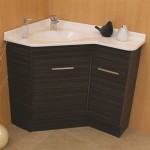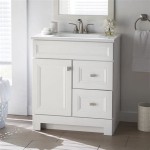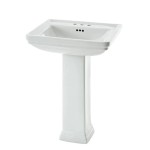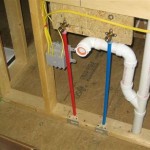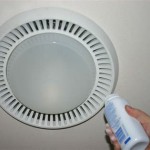How To Remove Water Stains From Bathroom Fittings
The persistent presence of water stains on bathroom fittings is a common yet frustrating issue for homeowners. Unsightly marks, often caused by hard water mineral deposits, can detract from the overall cleanliness and aesthetic appeal of bathroom fixtures. Removing these stains effectively requires an understanding of the underlying causes, appropriate cleaning agents, and proper techniques to prevent future occurrences. The following outlines the process of removing water stains from various bathroom fittings, encompassing faucets, showerheads, shower doors, and toilet bowls.
Water stains are primarily caused by minerals present in hard water, such as calcium and magnesium. When water evaporates, these minerals are left behind, forming a chalky or cloudy residue on surfaces. The severity of staining depends on the hardness of the water, the frequency of water exposure, and the type of material of the bathroom fixture. Failure to address these stains can lead to a buildup of mineral deposits, making them increasingly difficult to remove over time.
Identifying the Type of Water Stain
Before commencing the cleaning process, accurately identifying the type of water stain is paramount to selecting the most effective cleaning method. There are two main types of water stains: hard water stains and soap scum. Hard water stains appear as white or grayish mineral deposits, often found around faucets, showerheads, and toilet bowls, where water frequently evaporates. Soap scum, on the other hand, is a combination of soap residue, body oils, and minerals, typically found on shower doors, tiles, and bathtubs. Distinguishing between these two types of stains is crucial because they require different cleaning approaches.
A simple test to differentiate between hard water stains and soap scum involves applying a small amount of vinegar to the stain. If the stain dissolves or softens upon contact with vinegar, it is likely a hard water stain. If the stain remains largely unaffected by vinegar, it is more likely to be soap scum. Once the type of stain is identified, the appropriate cleaning solution can be selected.
Effective Cleaning Agents and Tools
The selection of cleaning agents and tools plays a significant role in the successful removal of water stains. Numerous commercial and homemade cleaning solutions are available, each with varying degrees of effectiveness. For hard water stains, acidic solutions are generally the most effective, as they help dissolve mineral deposits. For soap scum, alkaline or enzymatic cleaners are typically more suitable, as they break down the organic components of the residue.
Vinegar, a readily available household item, is a highly effective and environmentally friendly cleaning agent for hard water stains. Its acidic nature helps dissolve mineral deposits without the harsh chemicals found in many commercial cleaners. Lemon juice, another natural acidic solution, can also be used as an alternative to vinegar. For more stubborn hard water stains, a commercially available descaling solution specifically designed for bathroom fixtures may be necessary.
For soap scum, commercial bathroom cleaners formulated to break down soap residue are often the most effective. Enzymatic cleaners, which contain enzymes that digest organic matter, can also be used. In some cases, a combination of cleaning agents may be required to effectively remove both hard water stains and soap scum.
The tools used in the cleaning process are equally important. Soft cloths, sponges, and non-abrasive scrub brushes are recommended to prevent scratching or damaging bathroom fixtures. A toothbrush can be useful for reaching tight spaces and corners. A spray bottle is helpful for applying cleaning solutions evenly. Rubber gloves should always be worn to protect hands from harsh chemicals and to maintain hygiene.
Step-by-Step Cleaning Procedures for Different Bathroom Fittings
The following provides detailed cleaning procedures for removing water stains from various bathroom fittings:
Faucets and Showerheads:
Water stains on faucets and showerheads are particularly noticeable due to their prominent location and constant exposure to water. To remove these stains, begin by mixing equal parts white vinegar and water in a spray bottle. Spray the solution liberally onto the affected area and allow it to sit for 15-30 minutes to allow the vinegar to dissolve the mineral deposits. For stubborn stains, soak a cloth in vinegar and wrap it around the faucet or showerhead, securing it with a rubber band. After the soaking period, scrub the area gently with a soft cloth or non-abrasive brush to remove the loosened mineral deposits. Rinse thoroughly with water and dry with a clean cloth. For chrome or stainless steel fixtures, using a microfiber cloth can help prevent streaks and water spots.
For showerheads with clogged nozzles due to mineral buildup, unscrew the showerhead and soak it in a solution of vinegar and water overnight. This will dissolve the mineral deposits and restore the showerhead's water flow. Use a small brush or toothpick to clean out any remaining debris from the nozzles before reassembling the showerhead.
Shower Doors:
Shower doors are prone to both hard water stains and soap scum buildup. To clean shower doors, start by spraying the entire surface with a solution of white vinegar and water. Allow the solution to sit for 10-15 minutes to loosen the stains. Use a sponge or non-abrasive scrub brush to scrub the door, paying particular attention to areas with heavy buildup. For stubborn soap scum, apply a commercial soap scum remover and follow the manufacturer's instructions. Rinse the door thoroughly with water and use a squeegee to remove excess water. This will help prevent new water spots from forming. Drying the shower door with a clean cloth after each use is an effective way to prevent future water stain buildup.
For glass shower doors with etched-in water stains, a slightly abrasive cleaner, such as a glass cleaner formulated for hard water stains, may be necessary. Apply the cleaner to a soft cloth and gently rub the affected area in a circular motion. Rinse thoroughly with water and dry with a clean cloth. Avoid using harsh abrasive cleaners, as they can scratch or damage the glass.
Toilet Bowls:
Toilet bowls can accumulate hard water stains, particularly below the waterline. To remove these stains, pour one cup of white vinegar into the toilet bowl and let it sit overnight. The vinegar will dissolve the mineral deposits and make them easier to remove. In the morning, scrub the toilet bowl with a toilet brush to remove the loosened stains. Flush the toilet to rinse. For stubborn stains, use a pumice stone specifically designed for cleaning toilet bowls. Wet the pumice stone and gently rub it against the stain until it disappears. Be careful not to apply too much pressure, as this can scratch the porcelain. Alternatively, a commercial toilet bowl cleaner formulated for hard water stains can be used, following the manufacturer's instructions.
For toilet bowls with stains in the rim jet holes, use a small brush or pipe cleaner to clean out any mineral deposits that may be blocking the water flow. A solution of vinegar and water can also be poured into the overflow tube to help dissolve mineral deposits in the tank.
Preventative Measures to Minimize Water Stain Buildup
Preventing water stains from forming in the first place is the most effective way to maintain the appearance of bathroom fittings. Several preventative measures can be implemented to minimize mineral buildup and reduce the frequency of cleaning.
The most important preventative measure is to dry bathroom fixtures after each use. Wiping down faucets, shower doors, and countertops with a clean cloth after showering or using the sink will prevent water from evaporating and leaving behind mineral deposits. Keeping a squeegee in the shower for quick drying of shower doors and walls is a simple yet effective habit.
Another way to reduce water stain buildup is to install a water softener in the home. Water softeners remove minerals like calcium and magnesium from the water supply, reducing the hardness of the water and minimizing mineral deposits. This is a more expensive solution, but it can significantly reduce water stain problems throughout the entire house, not just in the bathroom.
Regular cleaning is also essential for preventing water stain buildup. Cleaning bathroom fixtures at least once a week will prevent mineral deposits from accumulating and becoming more difficult to remove. Using a mild all-purpose cleaner or a solution of vinegar and water is usually sufficient for routine cleaning. For areas prone to heavy water exposure, applying a water-repellent sealant can help prevent water from adhering to the surface and leaving behind mineral deposits.
Additionally, consider using liquid soaps and shower gels instead of bar soaps, as bar soaps tend to leave behind more residue that contributes to soap scum buildup. Ensure proper ventilation in the bathroom by opening windows or using an exhaust fan during and after showering to reduce humidity and moisture buildup, which can exacerbate water stain problems.

5 Methods For Removing Hard Water Stains Bob Hoegler Plumbing

How To Clean Taps 4 Home Remedies For Sparkling

How To Remove Hard Water Stains From Taps 6 Methods Tested

No More Hard Water Stains How To Easily Clean Your Porcelain Sink In Minutes Vooki

How To Clean Taps 4 Home Remedies For Sparkling

How To Remove Hard Water Stains Puracy

How To Get Rid Of Hard Water Stains In Bathrooms Harpic

How To Remove Hard Water Stains Effectively Robinson Plumbing

How To Remove Hard Water Stains In Your Bathroom

3 Best Ways To Get Rid Of Hard Water Stains From Bathroom Tiles Kent
Related Posts
